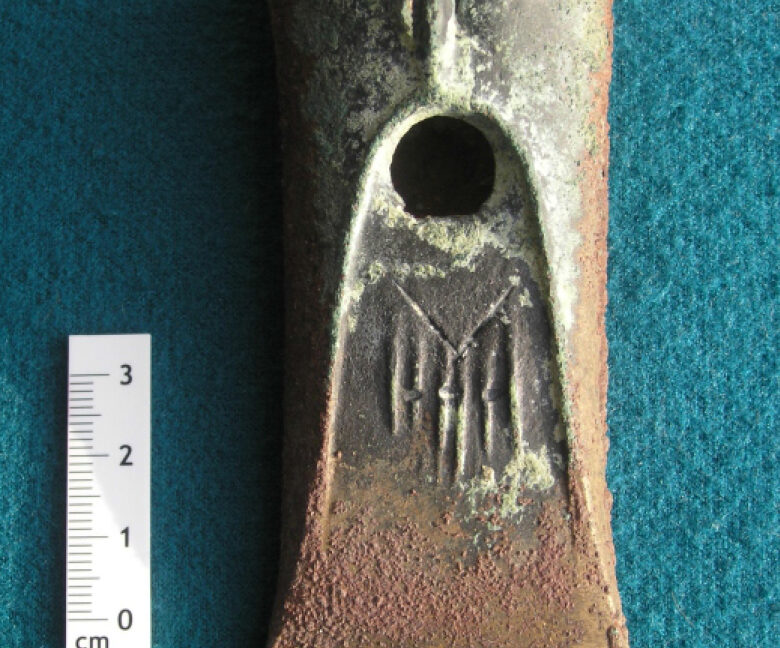
Jiffy corn muffins are an iconic, low-cost pantry staple introduced during the Depression. Thanksgiving is peak season for the company, which has been run by the same family for five generations.

Jiffy corn muffins are an iconic, low-cost pantry staple introduced during the Depression. Thanksgiving is peak season for the company, which has been run by the same family for five generations.
HP Inc. said that it will lay off 4,000 to 6,000 employees in favor of AI deployments, claiming it will help save $1 billion in annualized gross run rate by the end of its fiscal 2028.
HP expects to complete the layoffs by the end of that fiscal year. The reductions will largely hit product development, internal operations, and customer support, HP CEO Enrique Lores said during an earnings call on Tuesday.
Using AI, HP will “accelerate product innovation, improve customer satisfaction, and boost productivity,” Lores said.
In its fiscal 2025 earnings report released yesterday, HP said:
Structural cost savings represent gross reductions in costs driven by operational efficiency, digital transformation, and portfolio optimization. These initiatives include but are not limited to workforce reductions, platform simplification, programs consolidation and productivity measures undertaken by HP, which HP expects to be sustainable in the longer-term.
HP’s announcement comes as workers everywhere try to decipher how AI will impact their future job statuses and job opportunities. Some industries, such as customer support, are expected to be more disrupted than others. But we’ve already seen many tech layoffs tied to AI.
Salesforce, for example, announced in October that it had let go of 4,000 customer support employees, with CEO Marc Benioff saying that AI meant “I need less heads.” In September, US senators accused Amazon of blaming its dismissal of “tens of thousands” of employees on the “adoption of generative AI tools” and then replacing the workers with over 10,000 foreign H-1B employees. Last month, Amazon announced it would lay off about 14,000 people to focus on its most promising projects, including generative AI. Last year, Intuit said it would lay off 1,800 people and replace them with AI-focused workers. Klarna and Duolingo have also replaced significant numbers of workers with AI. And in January, Meta announced plans to lay off 5 percent of its workforce as it looks to streamline operations and build its AI business.
That’s just a handful of layoffs by tech companies that have been outrightly or presumably connected to AI investments.
According to analysis from outplacement services and executive coaching firm Challenger, Gray & Christmas, as of October, technology firms had announced 141,159 job cuts since the year’s start, a 17 percent increase from the same period last year (120,470).
But some experts question whether or not AI is really driving corporate layoffs or if companies are using the buzzy technology as a scapegoat.
Peter Cappelli, a management professor and director of the Center for Human Resources at The Wharton School of the University of Pennsylvania, told CNBC this month that “there’s very little evidence that [AI] cuts jobs anywhere near like the level that we’re talking about.” He noted that effectively using AI to replace human workers is “enormously complicated and time-consuming.”
In September, Gartner analysts predicted that all IT work will involve AI by 2030, compared to 81 percent today. However, humans will remain essential, per VP analysts Alicia Mullery and Daryl Plummer, who said that 75 percent of IT workloads will still involve people.
More broadly, there’s hope that AI will actually lead to more jobs, not fewer. In January, the World Economic Forum released its Future of Jobs Report 2025, which predicted that AI would create 78 million more jobs than it eliminates by 2030. The report was based on data from 1,000 companies with 14 million employees worldwide.
It will be years before we comprehend AI’s impact on the workforce. In the meantime, we can expect AI to be at the center of more layoff announcements —whether people believe the job cuts are solely the results of AI or not.

Plex is starting to enforce its new rules, which prevent users from remotely accessing a personal media server without a subscription fee.
Previously, people outside of a server owner’s network could access the owner’s media library through Plex for free. Under the new rules announced in March, a server owner needs to have a Plex Pass subscription, which starts at $7 per month, to grant users remote access to their server. Alternatively, someone can remotely access another person’s Plex server by buying their own Plex Pass or a Remote Watch Pass, which is a subscription with fewer features than a Plex Pass and that Plex started selling in April for a $2/month starting price.
Plex’s new rules took effect on April 29. According to a recent Plex forums post by a Plex employee that How-To Geek spotted today, the changes are rolling out this week, with a subscription being required for people using Plex’s Roku OS app for remote access. The Plex employee added:
This requirement change for remote streaming will come to all other Plex TV apps (Fire TV, Apple TV, Android TV, etc.) and any third-party clients using the API to offer remote streaming in 2026.
Plex started as a Mac port of the Xbox Media Center project in 2009 before evolving into a media server company and, more recently, a streaming service provider. Its new remote access rules will be a test for the company, which has been challenging long-time users with numerous changes over the past year, including a Plex Pass price hike, a foray into renting out officially licensed movies, and the introduction of social features and a mobile app redesign.
Plex has previously emphasized its need to keep up with “rising costs,” which include providing support for many different devices and codecs. It has also said that it needs money to implement new features, including an integration with Common Sense Media, a new “bespoke server management app” for managing server users, and “an open and documented API for server integrations,” including custom metadata agents,” per a March blog post.
In January 2024, TechCrunch reported that Plex was nearing profitability and raised $40 million in funding (Plex raised a $50 million growth equity round in 2021). Theoretically, the new remote access rules can also increase subscription revenue and help Plex’s backers see returns on their investments.
However, Plex’s evolution could isolate long-time users who have relied on Plex as a media server for years and those who aren’t interested in subscriptions, FAST (free ad-supported streaming TV) channels, or renting movies. Plex is unlikely to give up on its streaming business, though. In 2023, Scott Hancock, Plex’s then-VP of marketing, said that Plex had more people using its online streaming service than using its media server features since 2022. For people seeking software packages more squarely focused on media hosting, Plex alternatives, like Jellyfin, increasingly look attractive.
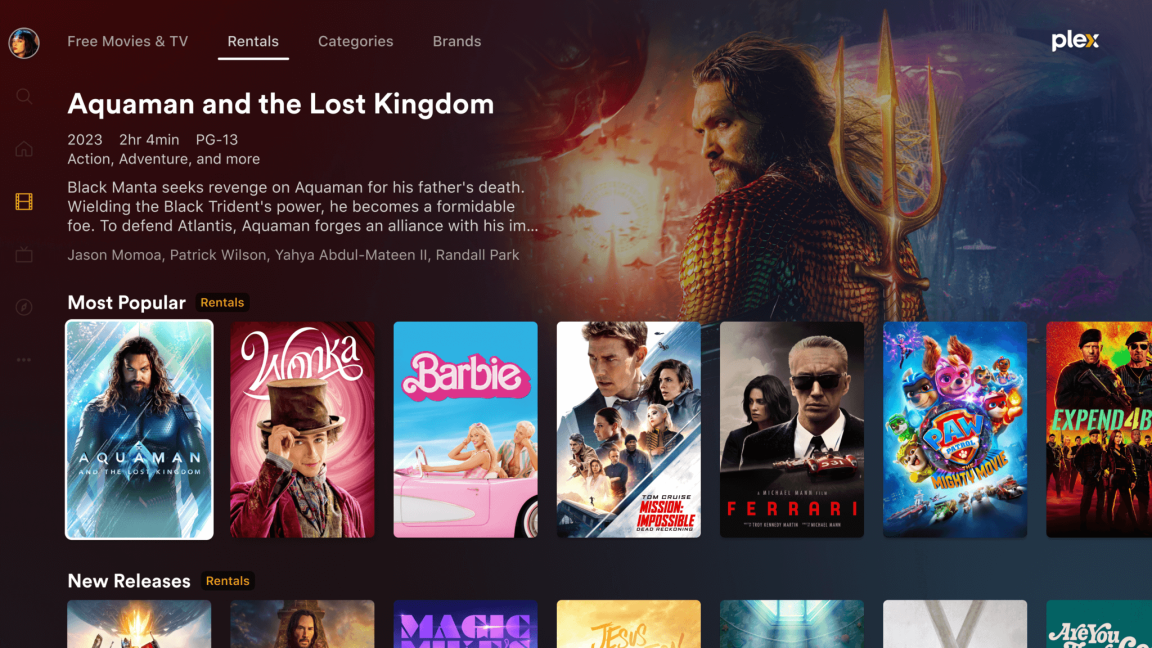
A man in Ireland earned the unpleasant distinction of developing an exceedingly rare infection on his penis—one that has a puzzling origin, but may be connected to his work with dead animals.
According to an article published in ASM Case Reports on Thursday, the 57-year-old man went to a hospital in Dublin after his penis became red, swollen, and painful over the course of a week. He also had a fever. Doctors promptly admitted him to the hospital and noted that he had received a kidney transplant 15 years prior. As such, he was on immunosuppressive drugs, which keep his body from rejecting the organ, but could also allow infections to run amok.
Initial blood work found hints of an infection, and the doctors initially suspected a bacterial skin infection (cellulitis) had taken hold in his nether region. So, they put him on some standard antibiotics for that. But his penis only got worse, redder, and more swollen. This prompted consultation with infectious disease doctors.
A more thorough review of the man’s case revealed that in the three months before his hospital visit, he had experienced fever, drenching night sweats, chills, loss of appetite, and weight loss. They also noted that he had a lot of dead animal exposure. He was born and raised on a farm in rural Ireland, worked as a butcher handling deer and occasionally cattle, and was an avid hunter who field-dressed game.
Given the systemic symptoms he mentioned in previous months, the doctors took computed tomography (CT) scans of his chest, abdomen, and pelvic region to investigate the cause. The images quickly revealed the answer; his lungs were speckled with seed-like nodules, characteristic of miliary tuberculosis.
Miliary tuberculosis (MTB) is a severe form of tuberculosis in which the instigating bacteria— Mycobacterium tuberculosis or potentially a relative that infects cows and deer, Mycobacterium bovis—spread widely through the body and create small lesions. The name “miliary” dates back to 1700, when a physician noted that the specks resembled millet seeds.
While Mycobacterium can spread through the air and are often found in the lungs, the bacteria can strike anywhere in the body. Still, penile tuberculosis is exceedingly rare. In fact, it’s uncommon to have tuberculosis erupt anywhere in the urinary and genital tracts. Among the infections that spring up in the region, penile infections account for less than 1 percent.
But, given the man’s lungs and his immunosuppressed status, the unusual presentation became their leading guess—and tests soon confirmed it. Mycobacterium were identified in the man’s respiratory tract, and penile tissue tested also showed the bacteria, though the testing couldn’t identify what species of Mycobacterium.
Treatment for tuberculosis requires a regimen of several antibiotics and takes months. In the man’s case, they customized his treatment with a 12-month, four-drug regimen that wouldn’t interfere with his transplant.
Still, the penile lesion got worse before it got better. He developed a large necrotic ulceration on the side of his penis, and his foreskin began to “break down.” Surgeons had to mechanically cut out the dead tissue. After 10 months, his infection appeared to have cleared, and his penile lesion had improved.
It remains unclear how the man got the infection. He told doctors he wasn’t aware of coming in contact with any tuberculosis patients and wasn’t in settings where the bacteria normally spread, such as prisons. It’s possible that the bacteria had been lurking in his transplanted kidney.
However, doctors speculated that it could also have been due to his animal exposure. Deer and cows are known to spread M. bovis, and people who hunt and butcher animals are known to be at risk. These workers can become infected from inhaling it from the exhaled breath of an infected animal or from direct contact with an infected animal’s wounded tissue or body fluids, such as what happens during slaughtering.
It’s unclear if the man’s infection started in his lungs or on his penis. It’s possible he could have inhaled it first; the bacteria were clearly in his lungs. But he could have also picked up the bacteria on his hands while working and then spread it further while, for example, using the bathroom. The doctors note a similar situation called “Prosector’s wart,” when doctors or scientists conduct dissections or autopsies on tuberculosis-infected specimens, they can develop wart-like tuberculosis skin infections. The infections are often on the hands, but can occur anywhere on the body.
Tuberculosis has been found to spread in some surprising ways. The doctors noted a case report from the UK in 2001 in which a man developed penile tuberculosis and his partner developed uterine tuberculosis a year later, suggesting sexual transmission.
While it will remain a mystery how the man developed such a rare infection, there’s a happy ending for this case and others: “Encouragingly, all published cases of penile TB responded well to anti-TB therapy with full recovery,” the doctors conclude.

Today all that’s left of the ancient city of Semiyarka are a few low earthen mounds and some scattered artifacts, nearly hidden beneath the waving grasses of the Kazakh Steppe, a vast swath of grassland that stretches across northern Kazakhstan and into Russia. But recent surveys and excavations reveal that 3,500 years ago, this empty plain was a bustling city with a thriving metalworking industry, where nomadic herders and traders might have mingled with settled metalworkers and merchants.
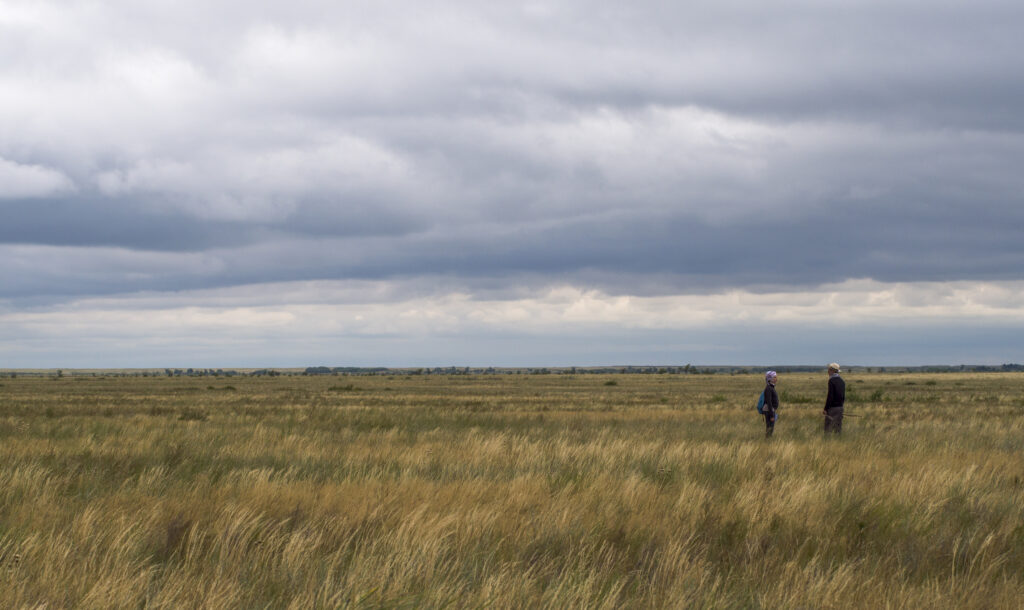 Radivojevic and Lawrence stand on the site of Semiyarka.
Credit:
Peter J. Brown
Radivojevic and Lawrence stand on the site of Semiyarka.
Credit:
Peter J. Brown
University College of London archaeologist Miljana Radivojevic and her colleagues recently mapped the site with drones and geophysical surveys (like ground-penetrating radar, for example), tracing the layout of a 140-hectare city on the steppe in what’s now Kazakhstan.
The Bronze Age city once boasted rows of houses built on earthworks, a large central building, and a neighborhood of workshops where artisans smelted and cast bronze. From its windswept promontory, it held a commanding view of a narrow point in the Irtysh River valley, a strategic location that may have offered the city “control over movement along the river and valley bottom,” according to Radivojevic and her colleagues. That view inspired archaeologists’ name for the city: Semiyarka, or City of Seven Ravines.
Archaeologists have known about the site since the early 2000s, when the US Department of Defense declassified a set of photographs taken by its Corona spy satellite in 1972, when Kazakhstan was a part of the Soviet Union and the US was eager to see what was happening behind the Iron Curtain. Those photos captured the outlines of Semiyarka’s kilometer-long earthworks, but the recent surveys reveal that the Bronze Age city was much larger and much more interesting than anyone realized.
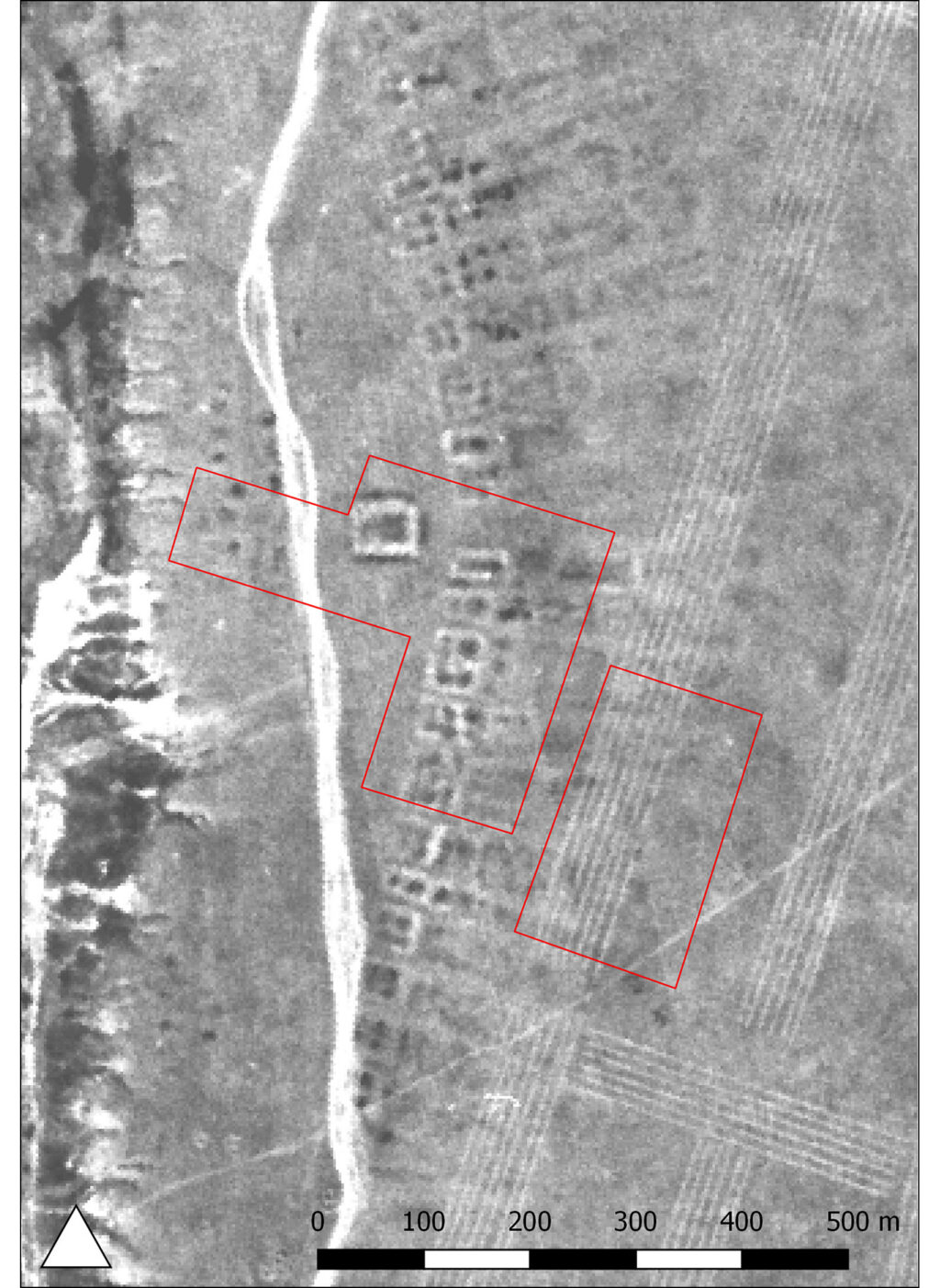


Most people on the sparsely populated steppe 3,500 years ago stayed on the move, following trade routes or herds of livestock and living in temporary camps or small seasonal villages. If you were a time-traveler looking for ancient cities, the steppe just isn’t where you’d go, and that’s what makes Semiyarka so surprising.
A few groups of people, like the Alekseeva-Sargary, were just beginning to embrace the idea of permanent homes (and their signature style of pottery lies in fragments all over what’s left of Semiyarka). The largest ancient settlements on the steppe covered around 30 hectares—nowhere near the scale of Semiyarka. And Radivojevic and her colleagues say that the layout of the buildings at Semiyarka “is unusual… deviating from more conventional settlement patterns observed in the region.”
What’s left of the city consists mostly of two rows of earthworks: kilometer-long rectangles of earth, piled a meter high. The geophysical survey revealed that “substantial walls, likely of mud-brick, were built along the inside edges of the earthworks, with internal divisions also visible.” In other words, the long mounds of earth were the foundations of rows of buildings with rooms. Based on the artifacts unearthed there, Radivojevic and her colleagues say most of those buildings were probably homes.
The two long earthworks meet at a corner, and just behind that intersection sits a larger mound, about twice the size of any of the individual homes. Based on the faint lines traced by aerial photos and the geophysical survey, it may have had a central courtyard or chamber. In true archaeologist fashion, Durham University archaeologist Dan Lawrence, a coauthor of the recent paper, describes the structure as “potentially monumental,” which means it may have been a space for rituals or community gatherings, or maybe the home of a powerful family.
The city’s layout suggests “a degree of architectural planning,” as Radivojevic and her colleagues put it in their recent paper. The site also yielded evidence of trading with nomadic cultures, as well as bronze production on an industrial scale. Both are things that suggest planning and organization.
“Bronze Age communities here were developing sophisticated, planned settlements similar to those of their contemporaries in more traditionally ‘urban’ parts of the ancient world,” said Lawrence.
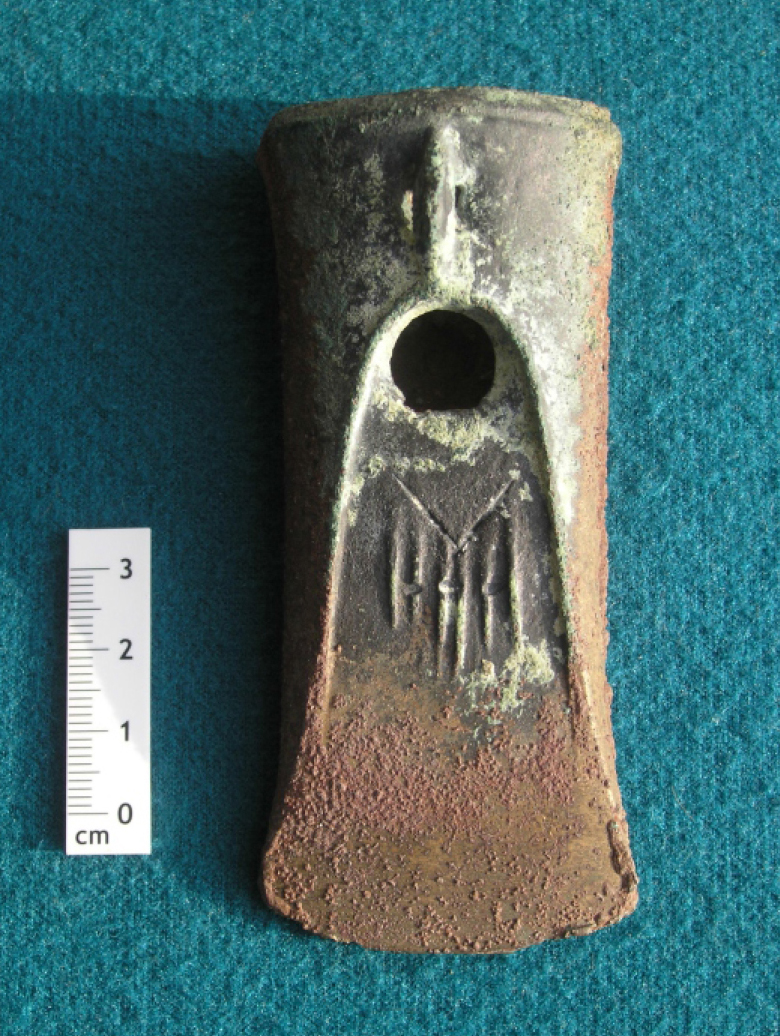
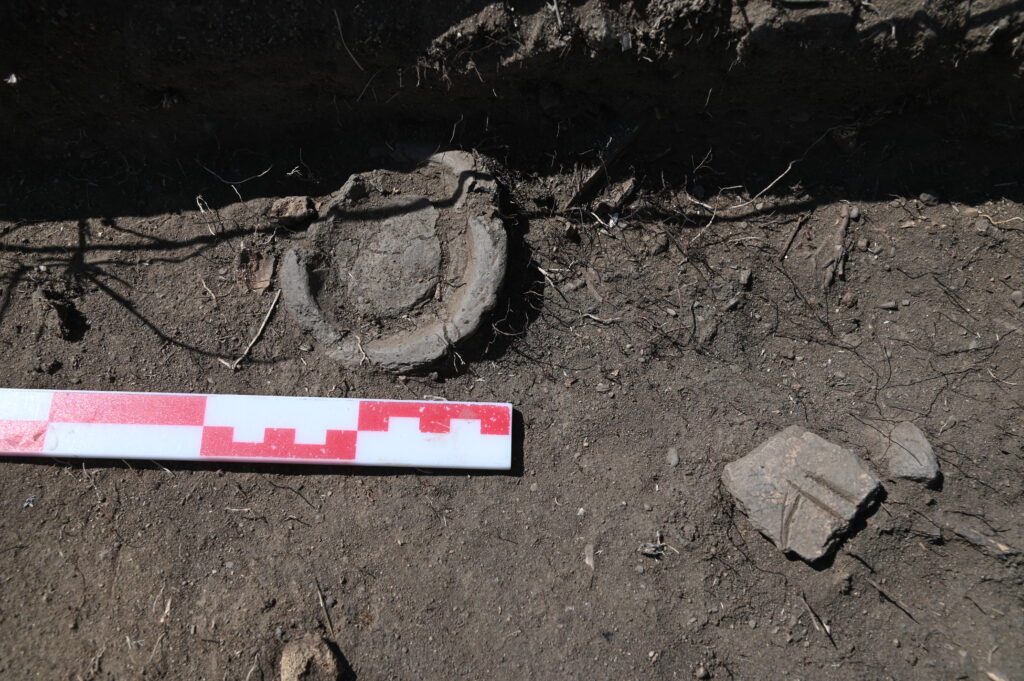
Southeast of the mounds, the ground was scattered with broken crucibles, bits of copper and tin ore, and slag (the stuff that’s left over when metal is extracted from ore). That suggested that a lot of smelting and bronze-casting happened in this part of the city. Based on the size of the city and the area apparently set aside for metalworking, Semiyarka boasted what Radivojevic and her colleagues call “a highly-organized, possibly limited or controlled, industry of this sought-after alloy.”
Bronze was a part of everyday life for people on the ancient steppes, making up everything from axe heads to jewelry. There’s a reason the period from 2000 BCE to 500 BCE (mileage may vary depending on location) is called the Bronze Age, after all. But the archaeological record has offered up almost no evidence of where all those bronze doodads found on the Eurasian steppe were made or who was doing the work of mining, smelting, and casting. That makes Semiyarka a rare and important glimpse into how the Bronze Age was, literally, made.
Radivojevic and her colleagues expected to find traces of earthworks or the buried foundations of mud-brick walls, similar to the earthworks in the northwest, marking the site of a big, centralized bronze-smithing workshop. But the geophysical surveys found no walls at all in the southeastern part of the city.
“This area revealed few features,” they wrote in their recent paper (archaeologists refer to buildings and walls as features), “suggesting that metallurgical production may have been dispersed or occurred in less architecturally formalized spaces.” In other words, the bronze-smiths of ancient Semiyarka seem to have worked in the open air, or in a scattering of smaller, less permanent buildings that didn’t leave a trace behind. But they all seem to have done their work in the same area of the city.
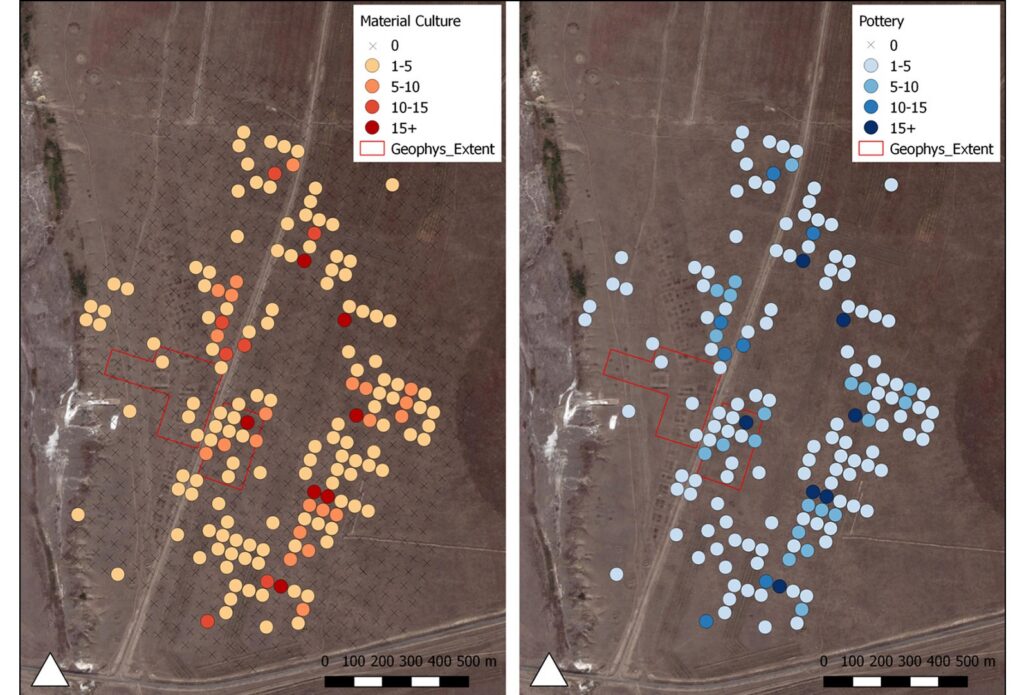
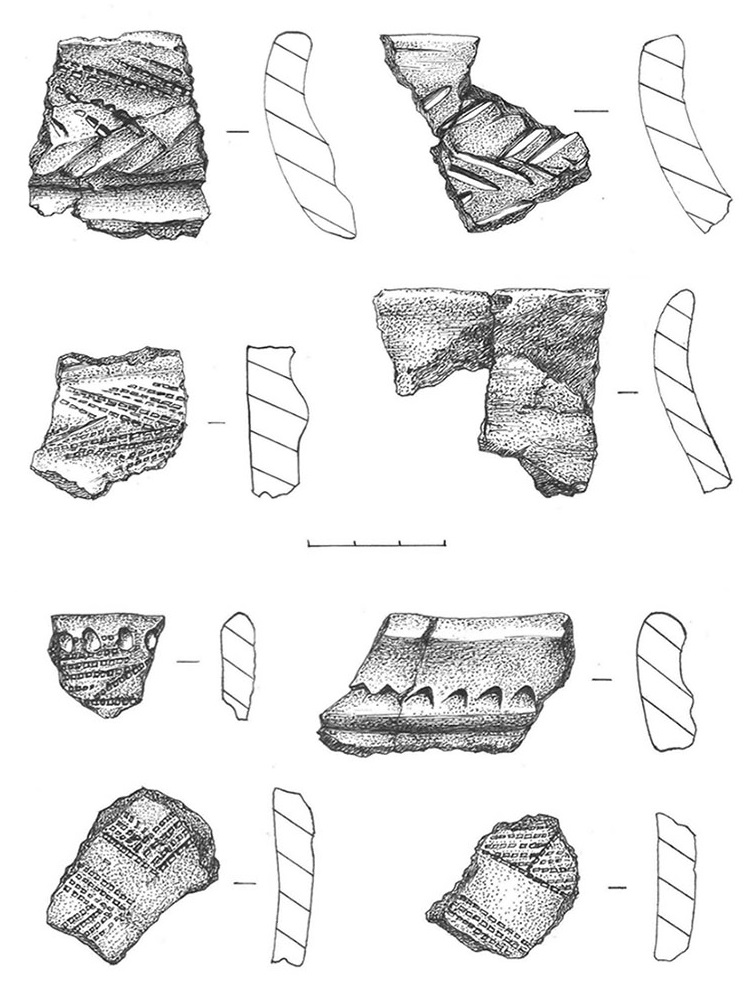
East of the earthworks lies a wide area with no trace of walls or foundations beneath the ground, but with a scattering of ancient artifacts lying half buried in the grass. The long-forgotten objects may mark the sites of “more ephemeral, perhaps seasonal, occupation,” Radivojevic and her colleagues suggested in their recent paper.
That area makes up a large chunk of the city’s estimated 140 hectares, raising questions about how many people lived here permanently, how many stopped here along trade routes or pastoral migrations, and what their relationship was like.
A few broken potsherds offer evidence that the settled city-dwellers of Semiyarka traded regularly with their more mobile neighbors on the steppe.
Within the city, most of the ceramics match the style of the Alekseevka-Sargary people. But a few of the potsherds unearthed in Semiyarka are clearly the handiwork of nomadic Cherkaskul potters, who lived on this same wide sea of grass from around 1600 BCE to 1250 BCE. It makes sense that they would have traded with the people in the city.
Along the nearby Irtysh River, archaeologists have found the fainter traces of several small encampments, dating to around the same time as Semiyarka’s heyday, and two burial mounds stand north of the city. Archaeologists will have to dig deeper, literally and figuratively, to piece together how Semiyarka fit into the ancient landscape.
The city has stories to tell, not just about itself but about the whole vast, open steppe and its people.
Antiquity, 2025 DOI: 10.15184/aqy.2025.10244 (About DOIs).
